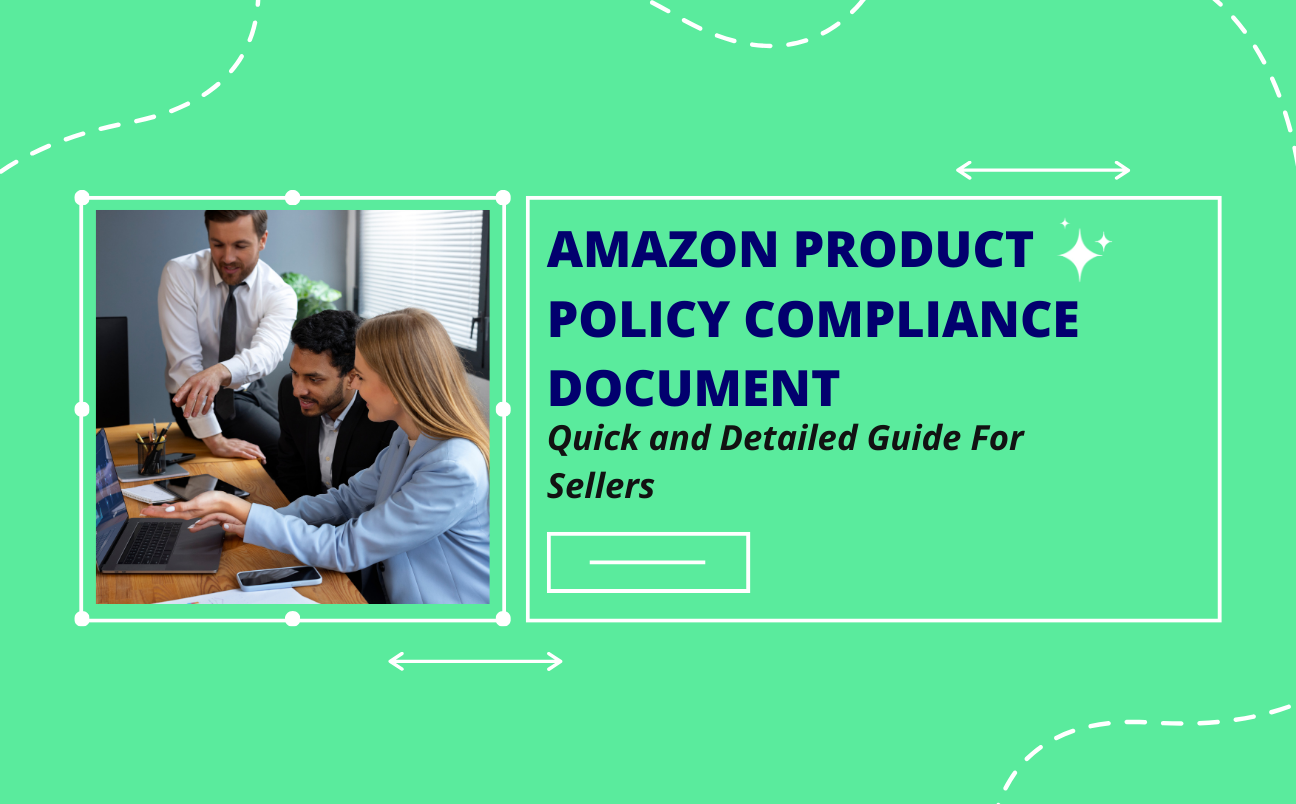Being an Amazon Seller, keeping up with the platform’s product policies and Amazon product listing optimization becomes necessary for one to operate a stable and profitable enterprise. Amazon does not stand for policy violations and those, who do not obey the rules, can face some terrible consequences, including the removal of the listing or the suspension of their Amazon Seller Account. In this all-inclusive guide, we’ll navigate through the intricacies of Amazon Product Policy Compliance, dive into the different types of violations, and offer actionable measures to avoid them thus having a smooth selling experience.
Understanding Amazon Product Policy Compliance:
Amazon Product Policy Compliance is a set of regulations that help ensure those products offered on the platform meet specific standards, provide the best client experience, and do not risk the safety or include any laws infringement. Through signing up with Amazon, sellers agree to abide by the policies in addition to local, state, and federal laws.
The Importance of Product Policy Compliance:
Adhering to Amazon Product Policy is essential for several reasons:
- Maintaining a healthy seller account: Amazon tracks each seller’s performance closely and policy violations might get the seller’s account in trouble which could end up in listing deactivation or suspension of their account.
- Ensuring customer satisfaction: Amazon’s policies are in place to ensure that customers do not get counterfeit, unsafe or misrepresented products, thereby building trust and a favourable experience.
- Avoiding legal repercussions: Sellers can find themselves facing legal consequences, such as fines and lawsuits, by selling goods that infringe intellectual property rights or safety regulations.
Amazon Product Policy Violations
Amazon categorizes product policy violations into several categories, including:
- Suspected intellectual property violations: These happen when Amazon suspects that a listing by a seller may violate intellectual property rights, i.e. trademarks or copyrights.
- Received intellectual property complaints: These are the formal claims by the brand owners or the right holders to the seller’s listing for alleged violations.
- Product authenticity customer complaints: Customers can complain if they detect that the product they have received is fake or not genuine.
- Product condition customer complaints: These occur once when the product’s condition doesn’t match the product description given on the listing.
- Product safety customer complaints: Consumers may raise concerns about the product’s safety or conformance with the applicable standards.
- Listing policy violations: These violations occur when a seller listing does not follow Amazon’s listing guidelines like creating redundant listings or including inconsistent variations.
- Restricted product policy violations: Some products need Amazon’s permission for listing, in such cases selling a product without permission can be a violation.
- Customer product review policy violations: Amazon’s policies clearly establish the rules by which manipulated or incentivised reviews are prohibited.
Avoiding Amazon Product Policy Violations
Being proactive in the prevention of policy violations needs to be a priority factor for the preservation of a seller account and long-term success on the Amazon marketplace. Here are some effective strategies:
- Conduct thorough product research: It is better to get to know the brand policy related to resellers plus the rights for intellectual property before your product listing to avoid being involved in the charges of copyright.
- Follow Amazon’s product listing guidelines: Carefully study and adhere to Amazon’s guidelines for preparing product listings ensuring that the description, images and categorization are relevant.
- Maintain documentation: Keep a record of product procurement that includes invoices and purchase orders to prove if authentication is needed at any later stage.
- Monitor customer feedback: monitor the feedback from customers continuously and solve any problems immediately to protect a positive rating as a seller.
Addressing Amazon’s Product Policy Violations
While you receive a notification of policy violation through Amazon, it is vital to get yourself to act that quickly and comply with the instructions given in the notification steps one by one. Here’s a step-by-step approach:
- Check the violation detail and detect the reason.
- Develop an appeal letter of violation which will include a Plan of Action (POA), including both corrective and preventive measures.
- Incorporate supplier invoices or permission letters from brand owners among other supporting documents.
- Send the letter of appeal and the correct documents within the allocated time (usually within the next 48 hours).
- Give follow-up & supply more information if Amazon requests it.
You must bear in mind that the mentioned policy violations will remain displayed in your account health dashboard for up to 180 days, although they will no longer affect your account after you fully fix the issues.
Conclusion
Amazon Product Policy Compliance is one of the indispensable points when it comes to building a successful and sustainable business in the Amazon marketplace. By identifying the types of policy violations, coming up with proactive measures to avoid them, and promptly addressing any violation that may occur, sellers can guard their account health, keep the customers satisfied, and build a trustworthy relationship with Amazon.
If you need help enhancing your product listing to align with Amazon guidelines, HRL Infotechs, a recognized brand with professional product listing optimization services, could be your choice. Their team of professionals will be there every step of the way, providing reassurance that you are complying with Amazon’s policies and helping to increase your product’s visibility and sales potential.
